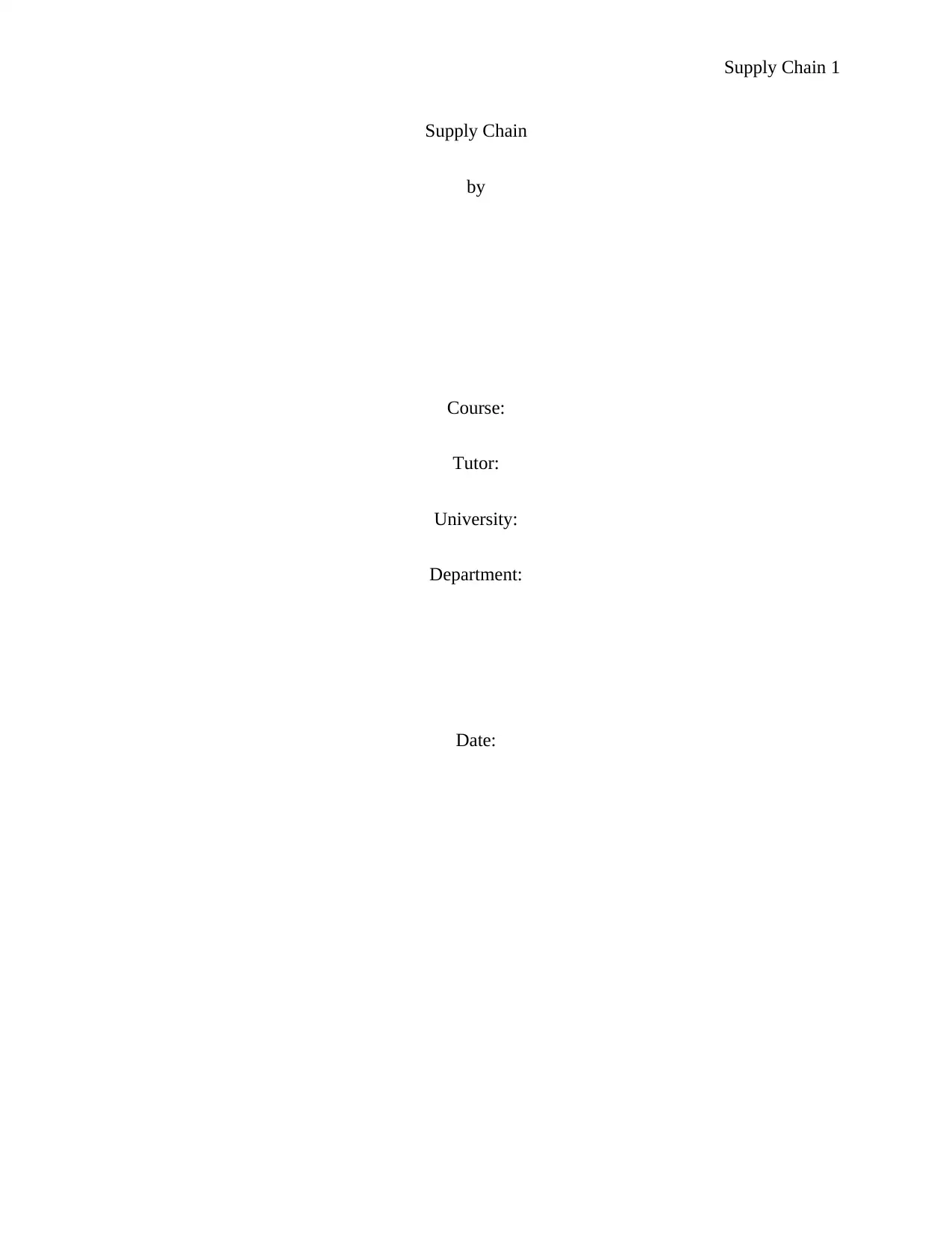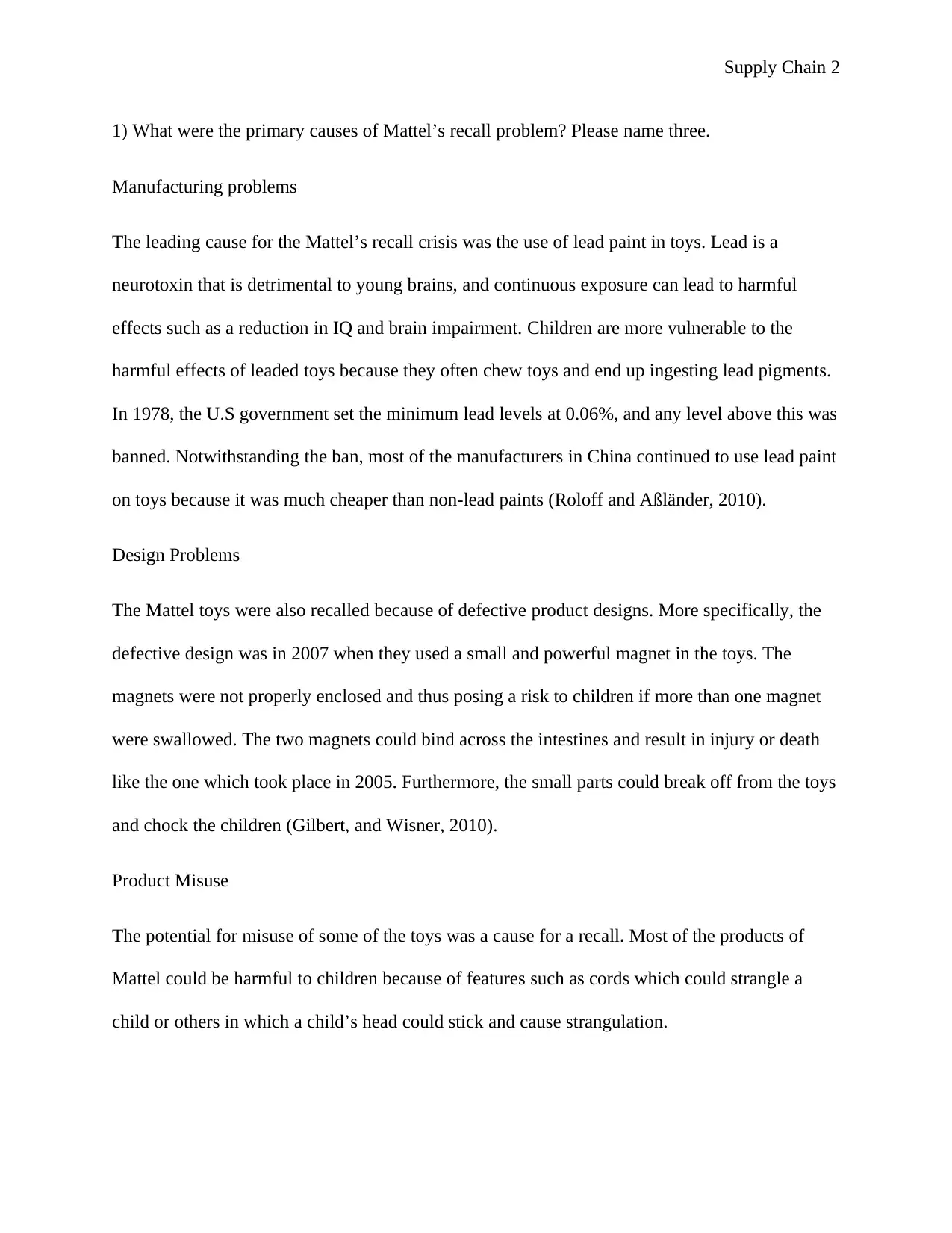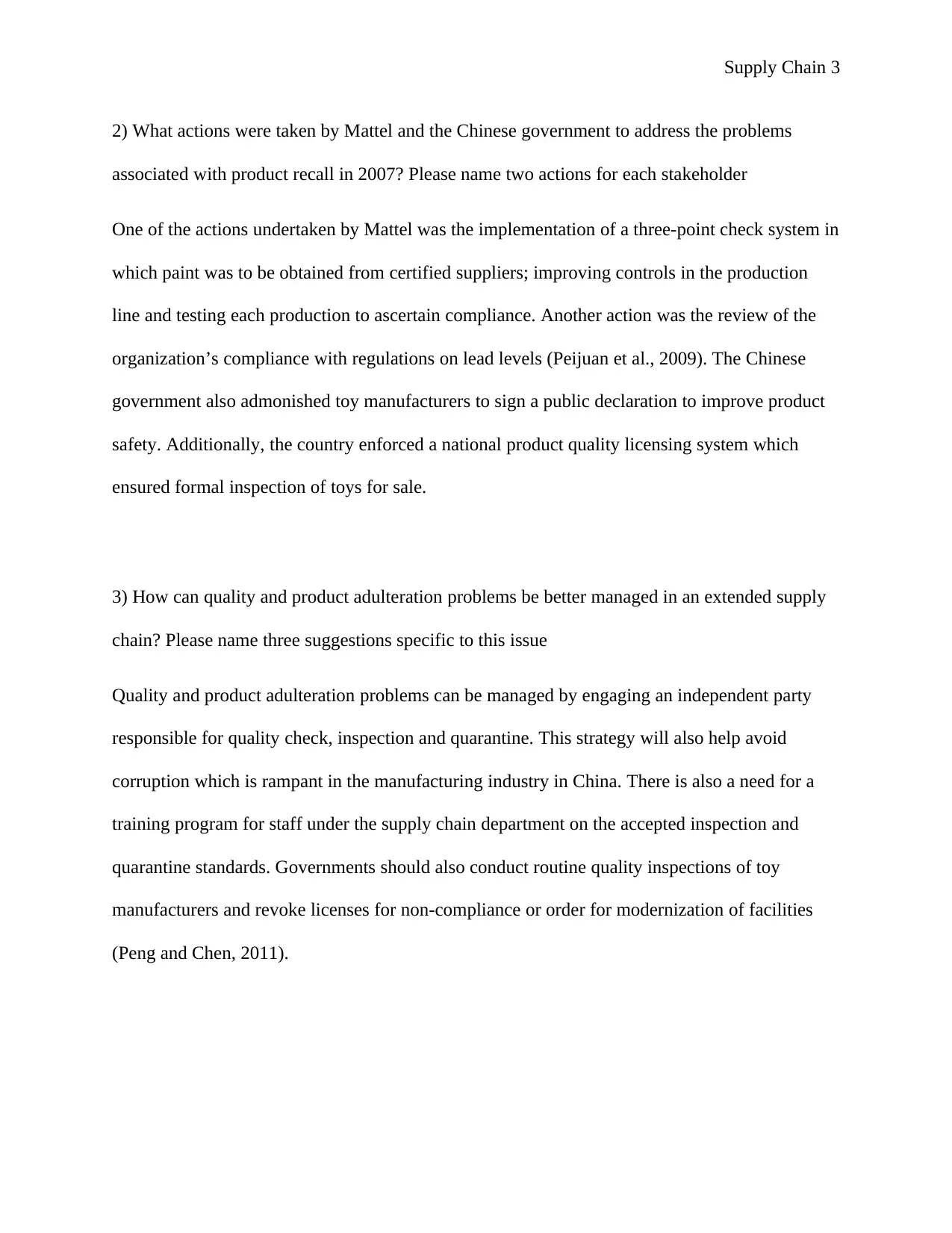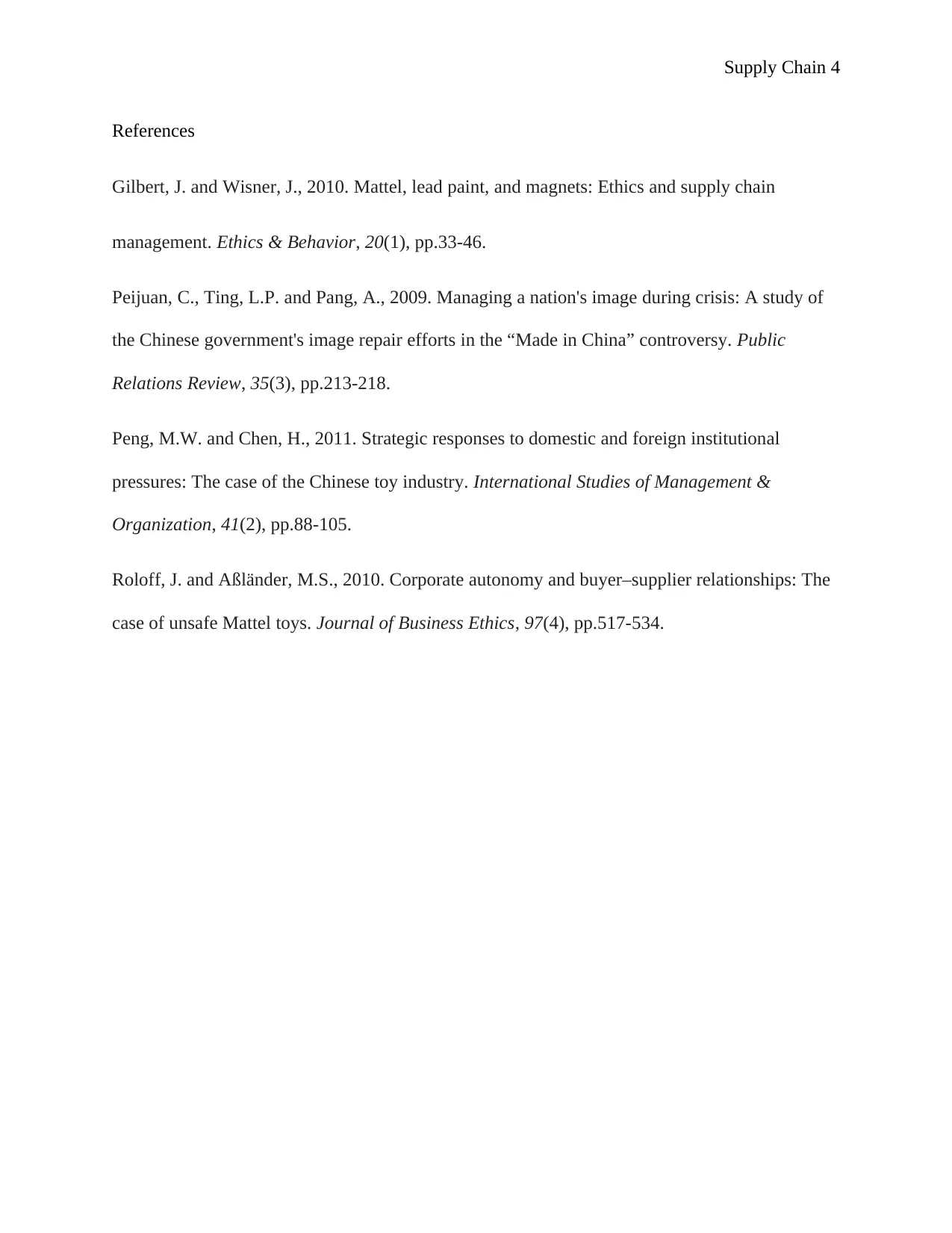University Supply Chain Case Study: Mattel Toy Recall Analysis
VerifiedAdded on 2022/12/19
|4
|744
|21
Case Study
AI Summary
This case study examines the Mattel toy recall of 2007, focusing on the primary causes, actions taken, and potential solutions for quality and product adulteration problems within the supply chain. The recall was triggered by the use of lead paint, defective product designs involving small magnets, and potential product misuse. Mattel responded with a three-point check system and a review of compliance regulations, while the Chinese government enforced product quality licensing and public declarations. The study proposes that quality issues can be better managed by involving an independent party, implementing staff training programs, and conducting routine quality inspections by governments. The case highlights the importance of robust supply chain management to ensure product safety and prevent future recalls. The assignment provides an analysis of the recall, including the root causes and the responses of Mattel and the Chinese government. The case study also suggests strategies for improving quality control and preventing product adulteration in extended supply chains.
1 out of 4











![[object Object]](/_next/static/media/star-bottom.7253800d.svg)